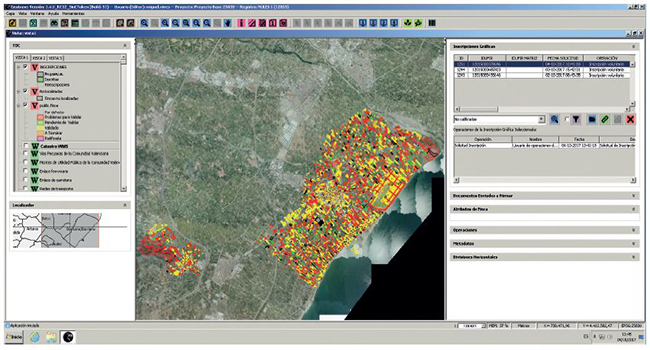
Resumen
Desde sus inicios el Catastro y el Registro de la Propiedad en España han estado separados y con objetivos muy distintos, los cuales recaen sobre una misma realidad inmobiliaria. Su coordinación resulta indispensable para una mejor identificación de los inmuebles y una más adecuada prestación de servicios a ciudadanos y Administraciones. Por ello el gobierno español aprueba en el año 2015 la Ley 13/2015 para conseguir la deseable e inaplazable coordinación Catastro-Registro. Dicha Ley entró en vigor el 1 de noviembre de 2015, junto con dos resoluciones conjuntas que desarrollan los aspectos técnicos de la Ley en el intercambio de la información gráfica entre el Catastro, el Registro de la Propiedad y el Notariado. En dicha Ley está implicados varios ministerios, fundamentalmente el de Hacienda y el de Justicia; y entes diferentes como personal de Catastro, juristas (registradores, notarios, abogados,…), técnicos, y también los ciudadanos. Entre los aspectos técnicos destaca la representación gráfica georreferenciada y los ficheros de intercambio GML adaptados a la normativa europea INSPIRE; que han resultado una verdadera revolución al trasladar estos aspectos tan técnicos al mundo jurídico. Con dos años de aplicación aún está en sus inicios y en fase de adaptación, pues es una Ley de largo recorrido que permite la coordinación de las fincas registrales-parcelas catastrales a medida que se incorporen al tráfico inmobiliario.
Palabras clave: Ingeniero en Topografía, GML, coordinación, Cartografía, Geomática, notariado, Registro de la Propiedad, Catastro.
Abstract
Ever since the Cadastre and Land Registry have existed in Spain, they have been completely separate organisations with very different objectives, which influence the real-estate reality. Their coordination is essential to better identify buildings and to more suitably render services to citizens and Administrations. To this end, Law 13/2015 was passed in 2015 for this desirable and pressing Cadastre-Land Registry coordination to come about. This law came into force on 1 November 2015, and coincided with the development of the technical aspects of the graphical information exchange among the Cadastre, Land Registries and Notaries. Several ministries and different organisations, like the Cadastre personnel, jurists, technicians, and even citizens, are implied in this law. Among the technical aspects, georeferenced graphical representations and GML exchange files adapted to the European INSPIRE directives stand out. Such technical aspects are a genuine revolution as they were transferred to the legal world. After more than 2 years after its application, it is still in its initial and adaptation stages because it is a long-standing law that allows land registry units-cadastral parcels to be coordinated while they are incorporated into real-estate trade.
Keywords: Cadastre, Land Registry, Notary, Cartography, Geomatic, Coordination, GML, Land Surveyors.
Autores

Be the first to comment